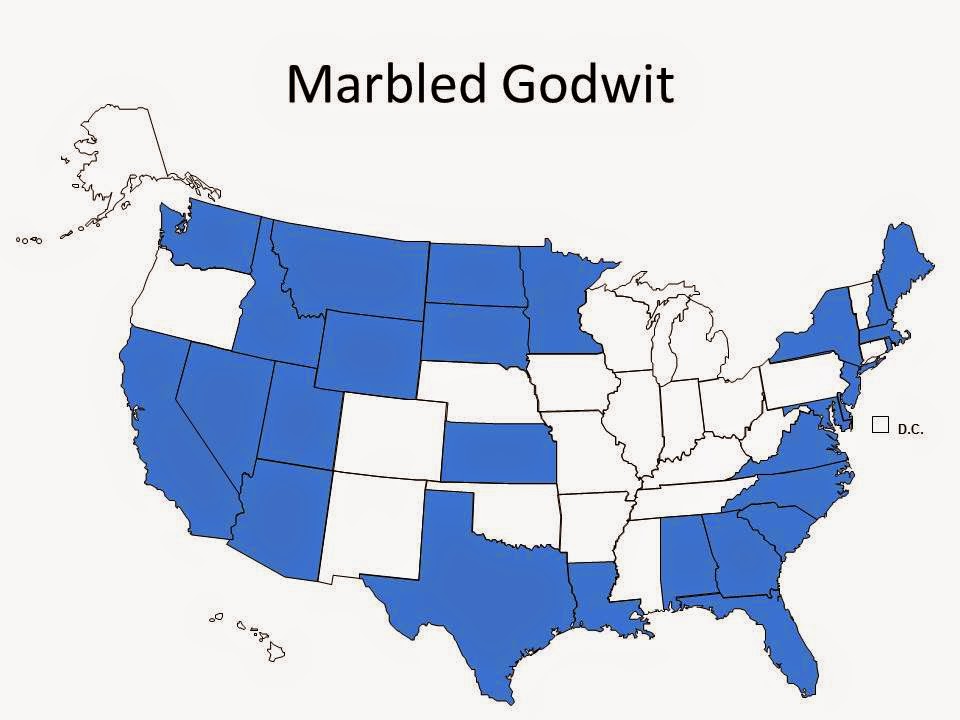I arrived at the Little Compton beach just
west of Quicksand Pond at about 7:30, early enough to not have to pay to park
at the town beach. Now the challenge was
to try to locate the Godwit in this very large pond with considerable mudflats. As I approached the southwest corner of the Pond
I noticed several shorebirds along the edge.
I did a quick scan and found several Dowitchers and a few peeps, but
nothing else of interest. Then I looked
to the east and found several more peeps, but still no large shorebirds. I didn’t see any other mudflats in the immediate
area, and started to worry about my chances.
Then farther off to the northeast I noticed a distant flock of maybe 200
gulls standing in shallow water. I
scoped through these birds and got brief glimpses of a smaller, darker bird
walking among the gulls. After a few
seconds it came out into the open and it was the Marbled Godwit. I ran into a couple local birders a couple
minutes later and they said the Godwit had not been seen the day before. I guess I got pretty lucky. That was number 314 for me in RI, and my
fourth New England state for this species (see my statebird map below). I’ve now seen it in most coastal states in
its migration and wintering range, many of the states in its inland breeding
range, and a few inland states as a migrant.
I spent a little more time at Quicksand
Pond looking for other shorebirds and found a number of peeps near the
southeast corner close to the outlet of the pond. I was about to leave the site when I looked
up and noticed a Royal Tern fly right over my head coming in off the
ocean. I watched it fly around the
northern stretch of the pond for a while but then lost it in the distance. Not a new statebird for me, but a good bird
for RI.
I headed back to the car and then drove
west to Guilford, CT to try for the Wilson’s Phalarope. This bird had been seen very reliably right
along the road at the edge of Leete’s Island saltmarsh for several days, and
was seen that morning, so I was quite optimistic. When I arrived another birder was already
there with a scope. She said she had
just arrived and hadn’t found the bird yet.
I wasn’t too disappointed (yet), and started to scan the flats. There were numerous peeps and a few
Yellowlegs, but no Phalarope. I continued
to scan, picked out a Baird’s and pointed it out to the other birder, but still
couldn’t find the Phalarope. Now I was
beginning to worry since all the posts had mentioned how cooperative the bird
had been right along the road. I started
to look farther out in the marsh and realized that there was quite a bit of
habitat with good numbers of peeps.
Maybe it was just out of sight at this point. I scanned some more and a medium-sized shorebird
with a white rump flew through my scope field.
I watched it land and it was indeed the Wilson’s Phalarope. I got this phonescoped photo of the bird as
it fed.
That was number 312 for me in CT, which was
my last New England state for Wilson’s Phalarope – my 227th species
in each New England state. And in my
statebird map (below), I’ve seen this species throughout most of its normal
range in the west and a number of eastern states as a rarity.



No comments:
Post a Comment